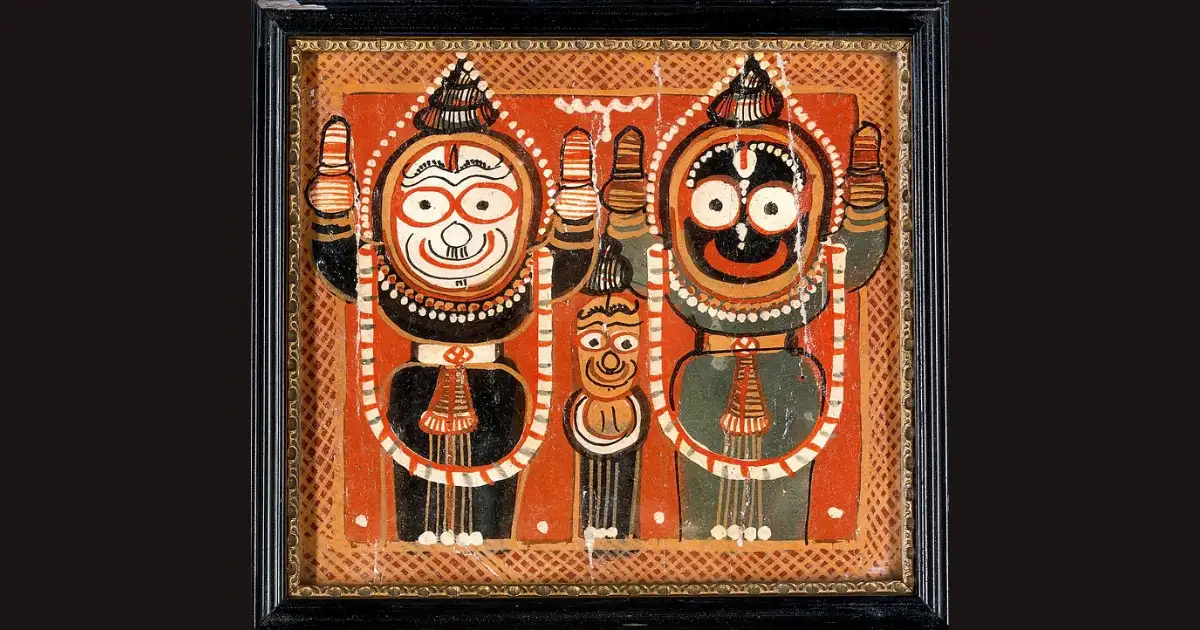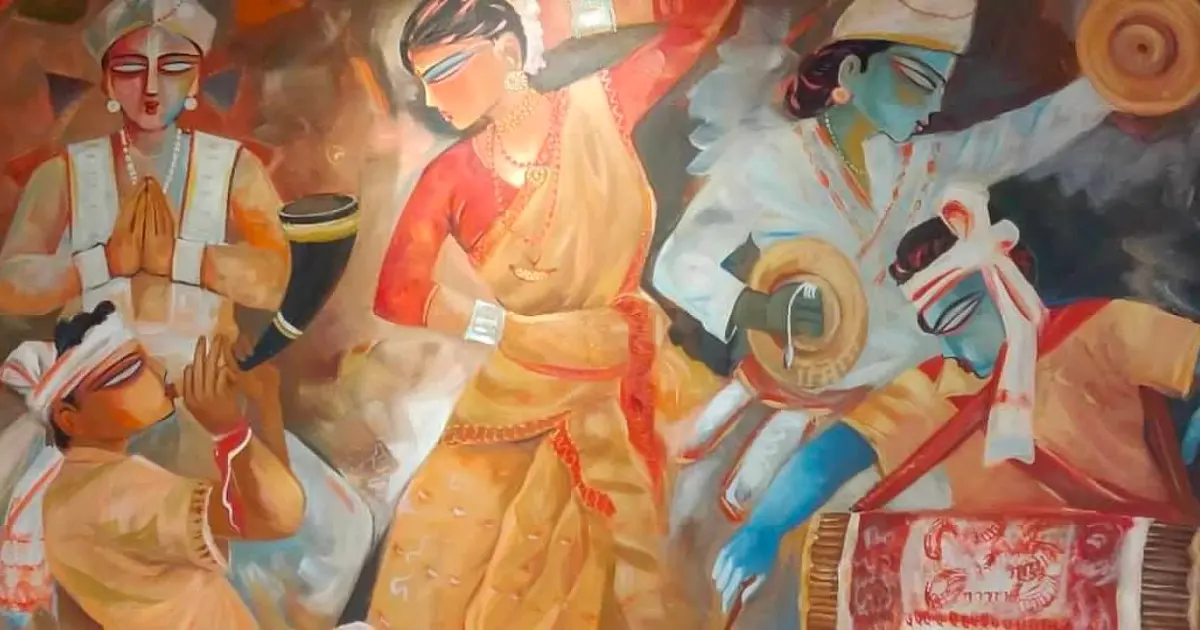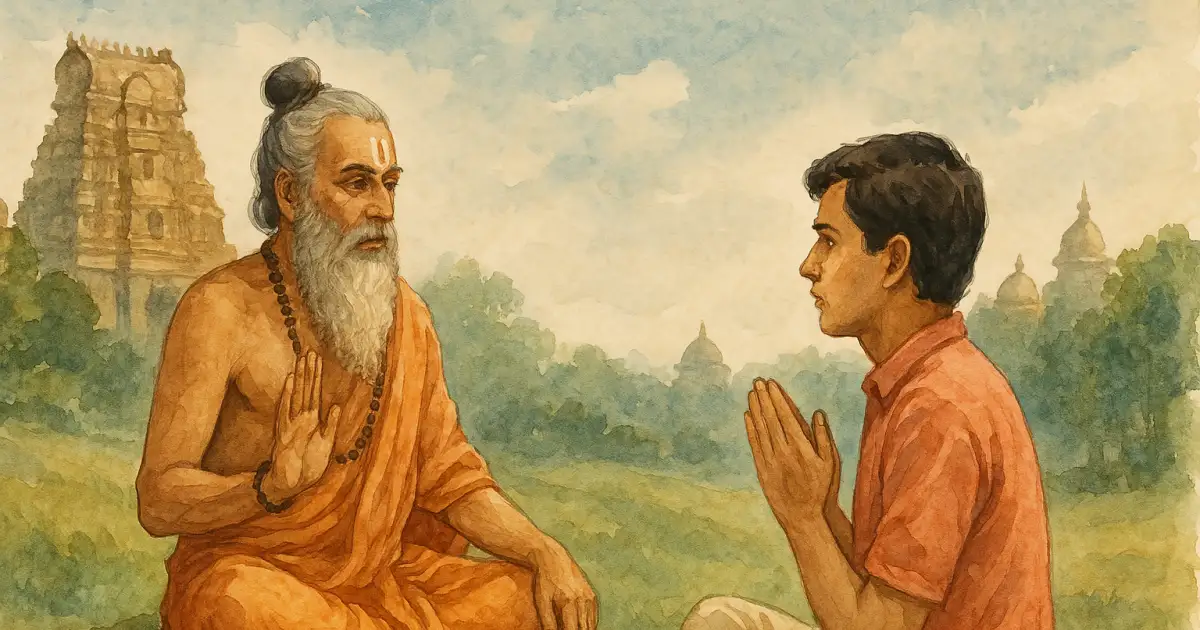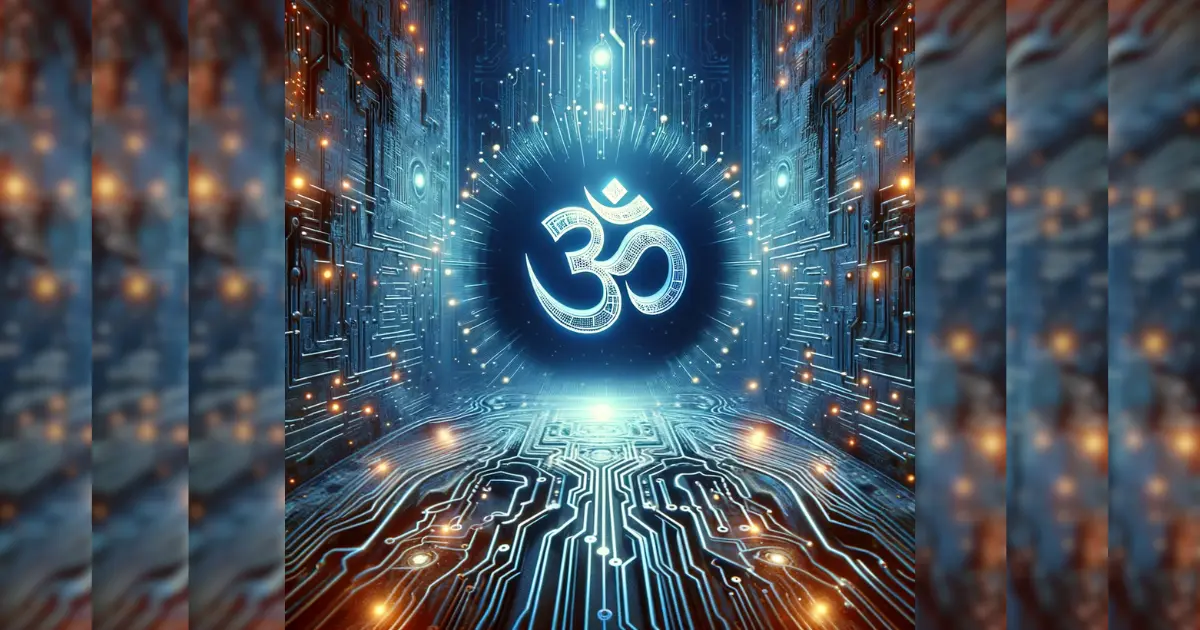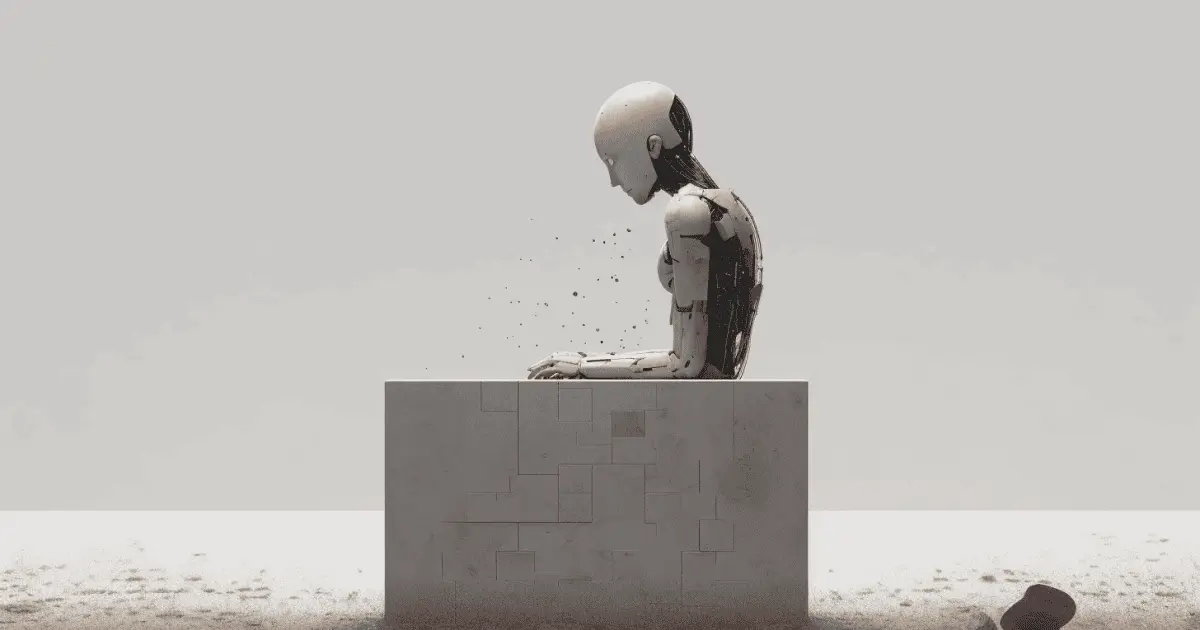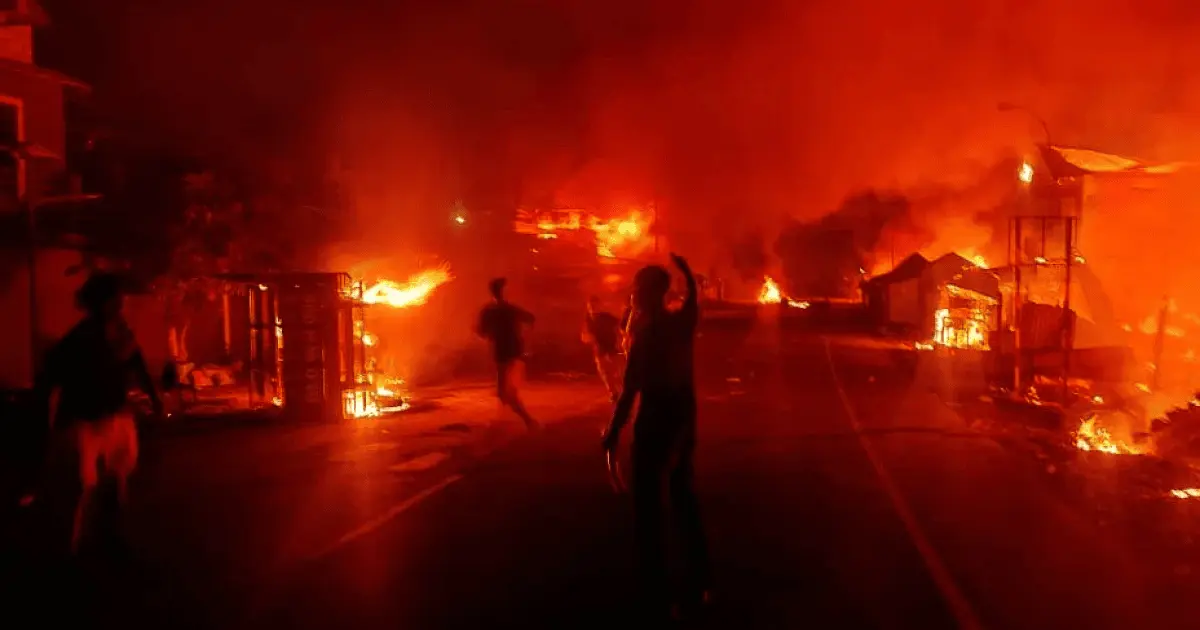Read Part 1, Part 2, and Part 3.
Rituals Performed (Major days)
Lord Jagannātha’s ratha yātrā goes on for a certain number of days, along with elaborate rituals. These rituals associated with the yātrā are also important to discuss. Following is the timeline and rituals associated with the Jagannātha ratha yātrā:
Timeline of Rituals and Details
1. Akṣaya Tṛtīya (Vaiśākha Month):
Ritual: Commencement of chariot construction.
Significance: Akṣaya Tṛtīya marks the beginning of the preparations for the Ratha Yātrā. According to the Hindu calendar, Akṣaya Tṛtīya symbolises prosperity and good fortune. On this auspicious day, the chosen logs arrive at Puri. The arrival of wood is celebrated with prayers to invoke divine blessings for the successful completion of chariots. The chariots are then ceremonially cut, and the construction work begins. A separate group of carpenters and artisans is responsible for undertaking the task of chariot construction, known as Viśvakarmā Sevakas. These carpenters have been performing their job for centuries. Special skills are required for making specific parts of the chariot. Each group of workers is known as ‘nijoga’. The following are the groups of carpenters and artisans involved in chariot construction:
- Badehi Maharanas: People from this group are involved in the main construction of the chariot.
- Gunakara: This group provides various measurement standards required in the construction.
- Pahi Maharanas: This group is responsible for fixing the wheel of the chariots.
- Kamara Kanta Nayakas ( Ojha Maharanas): This group involves ironsmiths who prepare nails, pins, clamps, iron rings, etc., required to fix the wheel and chariot.
- Chandakaras: This group carries components of major parts and assists in assembling and fixing them.
- Rupakaras: This group carves images and shapes in wood necessary for the decoration of the chariot.
- Murtikaras: This group creates sculptures in the wood of the chariots.
- Chitrakaras: This group paints and makes beautiful drawings on the chariots. They also paint the body parts of sculptures and images.
- Suchikaras (Darji Sevaks): This group of tailors prepares covers, flags, and cloth mantles.
- Ratha Bhois: This group consists of hard-working labourers who help skilled artisans in their work.
2. Snāna Pūrnimā (full moon day of Jyeṣṭha Month):
Ritual: The bathing festival.
Significance: This ritual marks the beginning of the full moon day of the month of Jyeṣṭha. The bathing of the deities is performed with 108 pots of water drawn from the ‘suna kua’ (golden well), which is located inside the premises of the Jagannātha temple. The water is preserved in the ‘Bhoga Maṇḍapa’ where it is purified by making it herbal and adding aroma with the help of sandalwood, turmeric, and flowers. A special group of priests known as ‘Suiras’ is responsible for taking 108 pitchers from the golden well to the bathing altar. It is ensured that water inside the golden well remains untouched throughout the year to maintain the sanctity of the ritual. It is only on this occasion of the year that the holy water is drawn from the well for the deities. After this, it is believed that the deities fall ill, leading to a period of isolation called anavasara.
3. Anavasara Period (Dark Fortnight of Āṣāḍha):
Ritual: Ritual seclusion of deities.
Significance: During this period, the deities are not available for public viewing, symbolising their rejuvenation after the bathing ceremony. The deities are worshipped in secrecy for two weeks, and during this time, the Brāhmins do not serve the deities; rather, the Daitāpatis of Śabara origin take up the worship. The word ‘daitā’ means ‘caretaker from the Daita lineage’. The Daitāpatis are considered closest to the deities. They decorate the deities with various cosmetics, oil, ornaments, flowers and paint them every day in a phased manner. They also offer fruits to the deities and themselves take prasad there. The Daitāpatis immerse themselves in serving the deities relentlessly. Therefore, the time is aptly called anavasara, meaning engagement without breaks. It is not suggested to give Vedic offerings to the deities during this time. Therefore, it is said that the spirit of devotion during this time is not formal or ritualistic.
4. Netrotsava (Āṣāḍha śukla Pakṣa Pratipāda):
Ritual: The rejuvenation of the deities.
Significance: After the period of anavasara, the deities are believed to gain full strength from their ill state. On this day, the deities are given a special eye treatment and are symbolically revived, marking the end of their seclusion. To ensure their best appearance, the eyes of the deities are given more life by applying a fresh coat of paint, and their eyes are ceremonially opened in a ritual known as netrotsava or nabajiban darshan and the Sandhyā Darśan (public viewing of the deities) is performed. This marks the end of their period of isolation.
5. Ratha Yātrā (Āṣāḍha śukla Pakṣa Dvitīyā):
Ritual: The grand chariot procession.
Significance: This is the main event of the festival. The deities are placed on their respective chariots and taken from the Jagannātha Temple to the Guṇḍicā Temple, where they stay for seven days.
Senapata lagi: Performed the night before. The deities are quite heavy; so a wooden cross is fixed to their backs, and thick, silken ropes are tied around their heads and waists for the procession.
Mangalarpana ritual: The Pūjā pāṇḍās, Pati Mohapātra (who performs the Badāshringāra āratī of Lord Jagannātha) and Mudiratha (who also performs royal rituals on behalf of the Gajapati Mahārāja), serve as servitors for this ritual in the three chariots.
Cherā panharā: Cherā panharā means ‘sweeping the floor of the chariot’. It is a symbolic ritual that takes place before the start of the yātrā. In this ritual, the King of Puri, i.e., the descendant of the builder of Jagannātha temple, pays homage to the deities and sweeps the platform of each chariot one by one with a golden broom.
Pahāṇḍi: The term Pahāṇḍi or Pahāṇḍi bijē comes from the Odia language, which means ‘procession.’ It refers to the slow procession of deities from the temple toward their chariots in a rhythmic movement. During this time, the daitāpati constantly sings ritualistic songs. The Praṇa Sabar (a section of Śabaras) have the traditional belief that songs rendered by them will ward off evil spirits and will safeguard deities in the chariots. The deities are then carried by the sevāyatas (temple servitors) in a slow, swaying manner, moving back and forth. The Pahāṇḍi concludes when deities are securely placed on their respective chariots. Once the deities are on the chariots, the next phase of the Ratha Yātrā begins, with the Cherā Paharā.
Yātrā to Guṇḍicā temple: The deities proceed on yātrā for which they are taken from Jagannātha Temple to Guṇḍicā temple in three gigantic chariots, namely, Nandighoṣa for Lord Jagannātha, Tāladhwaja for Lord Bālabhadra, and Darpadalana for Devi Subhadrā. The chariots are then pulled by devotees to the Guṇḍicā Temple. This journey is symbolic of Lord Jagannātha visiting his birthplace.
Adapa maṇḍapa: The public darśana in the evening of the deities on the maṇḍapa of the Guṇḍicā temple from the day of the ratha yātrā till the day before the Bāhuḍa yātrā (Return procession).
6. Hera Panchami (Āṣāḍha śukla Pakṣa Pancamī):
Ritual: Ritual of Goddess Lakśmī’s visit to the Guṇḍicā Temple.
Significance: On the fifth day of the Ratha Yātrā, Goddess Lakśmī, the consort of Lord Jagannātha, goes to the Guṇḍicā Temple to meet her husband, Jagannātha to remind him of her presence, and ask him to return to the main temple. As the Goddess was not allowed to do the yātrā with Lord Jagannātha, she felt aggrieved and lonely. So, in a fighting and angry mood, she starts her journey to Guṇḍicā temple, and she symbolically breaks up one of the several wheels of Jagannātha’s chariot. Later, in anguish, she returns to the Jagannātha temple.
For three days then, Guṇḍicā turns into Gupta (secret) Vṛndāvana and Shri Jagannātha performs the ‘Rāsa Līlā’, giving joy to all his devotees.
7. Bāhuḍa Yatra (Āṣāḍha śukla Pakṣa Navamī):
Ritual: The return journey of the deities to the Jagannātha Temple.
Significance: The deities return to the main Jagannātha Temple, and the chariots are stationed at the Lion’s Gate (Singhadwāra).
The Bāhuḍa Yātrā is also known as ‘Dakśinabhimukhi Yātrā’, i.e., movement of the chariot towards the south.
In Chapter 35, of the Puruṣottama-kṣetra-māhātmya, verses 6th to 11th in the Skanda Purāṇa, the ‘Dakśinabhimukhi Yātrā’ is detailed:
“On the eighth day, the chariots should be kept facing the South. The devotee should adorn (the deities and the chariots) with cloths, wreaths, flags, cherries, etc. On the morning of the ninth day, the Devas should be installed luxuriously in them.”
In the morning of the Bāhuḍa yātrā, the Bhittarchha Mahāpātra and Palia servitors perform Mangala āratī, Abakasha rituals. The Bittarchha Mahapatra is responsible for ‘Dwāra-Pitha’ (opening of the temple doors) every morning and performs the daily morning ritual of mangala-āratī of Lord Jagannath, while Palia Mekapa is a sevak who arranges for mangala āratī. The Pūjā Pāṇḍā servitors then offer Gopāla Ballabha, which is considered breakfast for the deities. The Skala Dhūpa or Rāj Bhog is offered.
The return of the chariots commences soon after the blowing of Bijē Kahali (victory bugle). During the Bāhuḍa Yātrā, different institutions, temples, and servitors offer dry special food (pankti bhoga) to the deities.
9. Suna Beśa (Āṣāḍha śukla Pakṣa Ekadaśī):
Ritual: The deities are dressed in gold.
Significance: This ritual takes place during the last phase of the Guṇḍicā Yātrā. The deities are adorned with gold ornaments on the chariots in front of the Singha Dwāra of the Jagannātha Puri temple on the Śukla Ekādaśi, and the public gets to witness the deities. The deities are adorned with a variety of gold ornaments, which are said to have been donated by Gajapati Kapilendradeva (ruled 1434-1466 AD) after conquering the Deccan rulers.
10. Adhara Pana (Āṣāḍha śukla Pakṣa Dwādaśi):
Ritual: Offering of a special drink to the deities.
Significance: On the 12th day of the bright moon phase, Adhārā Pāna, a special kind of drink, is offered. Adhārā means lip, while Pāna is juice or a sweet drink. This happens before the deities are taken inside the temple. The drink consists of cheese, milk, sugar, and a few spices. According to the ritual, the drink stored in terracotta pots is placed on each chariot parked near the Singhadwār, of the Puri Jagannātha temple. The drink is taken to the deity's lips.
As per the ritual, Pania Apata Sevakas (a group of people responsible for utensil cleaning and bringing water from Vimalā’s well for daily rituals of deities) will bring water from Vimalā’s well near Chhauni Matha near Singha Dwāra in Puri. The Mahāsuara (responsible for rituals associated with bhog) will prepare the Pāna with milk cream, cheese, sugar, banana, camphor, nutmeg, black pepper, and other such spices. The Patribadu (consecrated food-related services), Suarabadu (provides vaiśnavagni from the kitchen), Garabadu (supplies storage of water during rituals), Palia Sevaka (keeps a watch on deities and arranges for mangal āratī), and Pujapanda Sevaka will offer the Pāna to the Deities.
11. Nīlādri Bijaya (Āṣāḍha śukla Pakṣa Trayodaśi):
Ritual: The return of the deities to the sanctum sanctorum.
Significance: The deities finally return to the inner sanctum and are seated on the Ratna singhāsana of Srīmandira (Jagannātha Temple) at Puri, marking the end of the Ratha Yātrā festival. It is believed that on the entry of the deities, Goddess Lakśmī playfully bars Lord Jagannātha’s entry, and demands gifts, as she was deprived of the privilege of joining the ratha yātrā. Only after appeasing her, the Lord is allowed back inside the temple.
The ‘Navakalebar’ - Replacement of Wooden Idols Ritual - Done every 12 years
This generally takes place in the 12th and 19th year of the previous one. The year is fixed, which has two Āṣāḍha months or the Āṣāḍha month, which has two full moons and has the Adhika māsa. This is known as the ‘Purușottam-māsa, which suitable for this ritual. The idols are carved out of ‘nimba’ wood and are suitable for use in making idols of Viṣṇu by all castes. The Bhaviṣya Purāṇa in Ch. 131, Shloka 10 details this. The preparations begin from Śukla Daśami of the Caitra month.The seeking out of the Dāru/Tree is carried out together by tribal priests as well as the Jagannātha temple priests, which continues for 15-30 days. They travel to the famous temple of Maṇgala at Kakaṭpur, where the oldest Daitāpati (tribal priest) sleeps inside the temple and is to have a dream in which Goddess Maṇgala reveals the exact location of the tree. Each tree for each deity is found in different places.
Dāru of Sudarśan has to have three branches, the bark should be reddish and should have the sign of cakra with a depression in the middle.
The Dāru of Bālabhadra should have seven branches, the bark should be light brown or white, and should have the sign of the plough. Nearby there should be a heritage as well as a graveyard.
The Dāru of Subhadrā should have 5 branches and the bark should be yellowish with the sign of the lotus flower.
The Dāru of Śrī Jagannātha, its colour and symbols are already mentioned above in the King Indradyumna episode. Along with that, there should be a cremation ground nearby, with an anthill close by to it as well as a snakehole at its roots. It should be near a river or pond, or crossing of the three ways or be surrounded by three mountains. No bird nests or perching of birds should ever be done on it. It should be surrounded by trees like Varuṇa, Sahada, Belva. A Lord Śiva temple should be in the neighbourhood and some heritage nearby. It should also be free from parasite plants or creepers.
A yagya is then conducted for three days before the felling of the four Dārus by the priests. The dārus are then carried in a wooden cart with four wheels and it should be newly built. The prescribed rituals of obeisance are performed and the dārus are bathed and then the carpenters get to work in absolute secrecy for 21 days and leave only after completing it. They do not consume anything during the carving timings. Devotional songs are sung and Vedas are chanted throughout the period of the carving. Then once completed, the Ghaṭa Paribartan or transfer of ‘Brahma padartha’ is carried out in utmost secrecy on Krșṇa Caturdaśi of Aṣāḍha. It is performed by the Daitāpatis who belong to the Śabara tribe and descend from Viśvavasu.
The funeral rites of the old deities are then performed for 10 days by the same Daitāpatis.
The Idea of Kingship
Lord Jagannātha is not just worshipped as a deity but is also considered a supreme leader and divine ruler of the region. This kingship is reflected in various rituals and festivals of the region. For example, the grand procession of the Lord with his siblings during the ratha yātrā symbolises the king’s coming out to meet his subordinates. The act of pulling the chariots with the ropes, by the devotees, also signifies divine submission in front of the Lord.
It is obvious that when a similar idea of kingship is employed over the earthly kings, the whole concept reverses. Because all the powers of the individual are reduced in front of him, and everybody stands equal. This concept could very well be observed in the ritual named cherā panharā, where the “Rājā of Puri, the descendant of the builder of the Jagannātha Temple, comes in a palanquin, pays homage to the deities and sweeps the platform of each car one by one”. This ritual signifies the humility of the king before the divine ruler and establishes the idea that the earthly king is merely a sevak of the divine king, Lord Jagannātha.
Deeper significance
Wooden murtis/ nirakar parabrahma - The Deity of Lord Jagannātha is often called ‘Dāru Brahma’, i.e., the incarnation of God in wood. In the Ṛgveda we find references to ‘Dāru’ which runs thus,
अ॒दो यद्दारु॒ प्लव॑ते॒ सिन्धो॑: पा॒रे अ॑पूरु॒षम् । तदा र॑भस्व दुर्हणो॒ तेन॑ गच्छ परस्त॒रम् ॥
अदो यद्दारु प्लवते सिन्धोः पारे अपूरुषम् । तदा रभस्व दुर्हणो तेन गच्छ परस्तरम् ॥
ado yad dāru plavate sindhoḥ pāre apūruṣam |
tad ā rabhasva durhaṇo tena gaccha parastaram ॥
Ṛgveda 10.155.3
The literal translation of the above hymn runs as “The wood which floats by the seashore far off, remote from man, seize that, (O goddess), hard to destroy, and therewith go to a distant shore.” According to Sāyana’s Bhaṣya, Dāru, or the wooden body of the deity, is Lord Viṣṇu. Later, Sāyana concludes by suggesting that the tree, which is the most ancient and imperishable, is the Brahman himself. So, according to the conception of Sāyana, Brahman can be symbolised as a tree, and a tree is the symbol of Brahman. The worship of the tree or woods later took tantric form or the puranic form, and in this way, the worship of Dāru Brahmā has been transformed into the worship of Balbhadra, Subhadrā, Lord Jagannātha, and Sudarśana.
Theme of the Chariot
The festival of Ratha Yātrā is centred around the procession of three deities on three richly decorated chariots that carry the deities from Jagannātha temple to Guṇḍicā temple. New chariots are constructed and decorated every year from wood coming from specified trees such as phassi, dhausa, and others, which are believed to be sacred. All three chariots have their respective names, i.e., the chariot of Lord Jagannātha is named Nandighoṣa, while the chariot of Bālabhadra is called Tāladhwaja, and Goddess Subhadrā’s chariot is called Darpadalana. In the Darpadalana chariot, both Subhadrā and Sudarśana are seated together. All three chariots have different colours, which are prescribed according to the colour of the dresses the deities generally wear. The Lord Jagannātha is also conceived as Kṛṣṇa, who is adorned with Pitāmbara or yellow clothes. Hence, the chariot of Jagannātha is painted yellow. Bālabhadra is ‘Nilāmbara’ clothed in blue, whereas being conceived as Śakti is the goddess robed in red. The wheels of all three chariots also differ in number.
Lord Jagannātha’s chariot has 16 wheels, which indicate 16 kalās or divine principles of the Lord. These 16 kalās constitute five elements (earth, water, fire, sky, air) and 11 organs. It is with the help of these 16 elements that the Māyā is manifested and finds expression in creating avatāras or incarnations, which God desired to create.
Bālabhadra’s chariot is supported by 14 wheels. Lord Bālabhadra is the lord of this gross material world. The 14 wheels are indicative of fourteen worlds. The number of wheels also signifies the lifetime of Brahmā involving caturdaśa-manvantara.
The chariot of Subhadrā is named Devī-Ratna or Devīdalana. The 12 wheels of her chariot are indicative of the twelve months in a year. It can be deduced that the total number of wheels of all three chariots defines ‘life’ in all aspects.
Conclusion
The procession of Lord Jagannātha ratha yātrā plays a significant role in religious, social, and cultural aspects. The yātrā is symbolic of the manifestation of divine will, where the Lord himself comes out of the temple to bless his devotees, irrespective of caste, creed, or class. The yātrā acts as a platform where social roles are subverted and everyone becomes equal in the eyes of the Lord. The procession from Jagannātha temple to Guṇḍicā temple (birthplace of the deities) also represents the cyclic journey of the soul. Pulling the chariots with the rope signifies total surrender or submission to the Lord.
The grand yātrā of Lord Jagannātha promotes cultural unification and inclusivity by bringing people from various backgrounds together. This festival transcends all the boundaries of religious and social barriers.
The celebration of Rath Yātrā symbolises the sovereign rule of Lord Jagannātha over the land. It is also a reminder to the population that the deity's supreme authority and protection are over the region. This further strengthens the faith of devotees. The collective experience of faith, renewal, and rejuvenation enhances the spiritual connection between the devotees and the divine.
References
- https://www.wisdomlib.org/definition/jagannatha
- https://www.wisdomlib.org/hinduism/book/bhavishya-purana-sanskrit/d/doc1260296.html
- Navakalebar : Ritual and History by Dr. Hemanta Mohapatra
- K.C. Mishra. (edt. 1st, 1971). The Cult of Jagannāth. Firma K.L Mukhopadhyay, Calcutta, India. pg-110
- K.C. Mishra. (edt. 1st, 1971). The Cult of Jagannāth. Firma K.L Mukhopadhyay, Calcutta, India. Pg-vii
- K.C. Mishra. (edt. 1st, 1971). The Cult of Jagannāth. Firma K.L Mukhopadhyay, Calcutta, India. pg. 128
- https://magazines.odisha.gov.in/Orissareview/2011/july/engpdf/27-30.pdf
- https://odishabytes.com/puri-rath-yatra-lord-jagannath-siblings-to-enter-shree-gundicha-temple-today/
- https://www.wisdomlib.org/hinduism/book/brahma-purana-english/d/doc216134.html
- Brahma Purana, Chapter 63, 9-12.
- Skanda Purana, Chapter 35.
- https://www.wisdomlib.org/hinduism/book/the-skanda-purana/d/doc370756.html
- Personal interview with Pujari ji of Jagannath Temple. Name of the Pujari ji: Rajendra Peentu
- https://gaatha.org/Craft-of-India/rath-making-craft-puri-odisha/
- https://odishabytes.com/snana-purnima-all-you-need-to-know-about-divine-bath-hathi-besha-of-jagannath-siblings
- https://jagannathmandirdelhi.com/2023/06/27/navami-sandhya-darshan/
- https://www.wisdomlib.org/hinduism/book/the-skanda-purana/d/doc370755.html
- https://www.shreejagannatha.in/sevaks/#:~:text=Mudiratha%20is%20the%20sevak%20representative,to%20perform%20Gajapati%20Maharaja%20seva.
- https://odishabytes.com/bahuda-yatra-of-puri-jagannath-temple-lords-today-know-the-schedule/
- https://odishabytes.com/adhara-pana-ritual-of-lord-jagannath-know-more-about-this-sweet-drink-for-rath-rakhyak/
- K.C.Mishra. (1971). The Cult of Jagannath. Pg. 96
- K.C. Mishra.(1971). The Cult of Jagannath. Pg. 132
- https://www.wisdomlib.org/hinduism/book/rig-veda-english-translation/d/doc840266.html
- https://www.wisdomlib.org/hinduism/book/rig-veda-english-translation/d/doc840266.html
- Scholar interview with Acharya Dr. Balaji Kumar Satapathy
